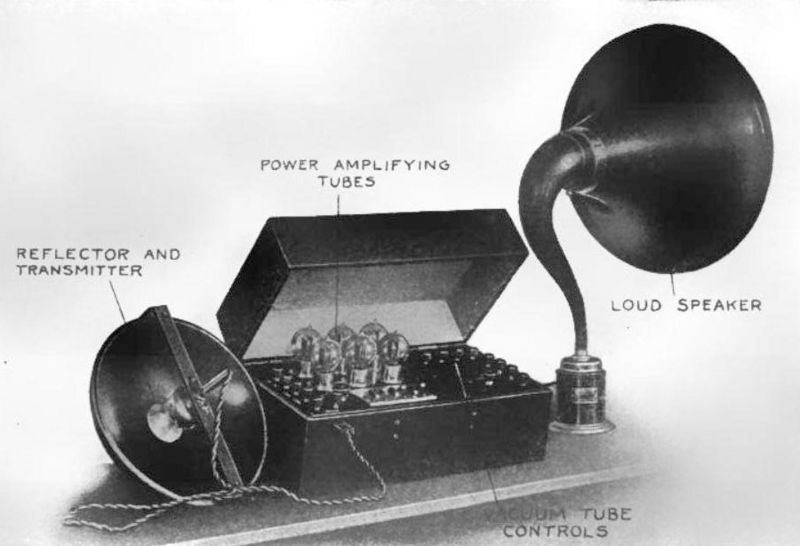Image: Early vacuum tube public address system

Description: One of the first electronic public address systems from about 1920, used to amplify a speaker's voice when addressing a crowd. It consisted of a microphone (left, then called a "transmitter"), attached to a vacuum tube amplifier (center) to increase the power of the audio signal, which drove a horn loudspeaker (right). The microphone has a metal reflector to concentrate the sound waves, allowing the speaker to stand back from it while speaking so the microphone would not obscure his face. The primitive triode vacuum tubes had very low gain, so the amplifier used six tubes (visible in center). Even so, the output power of the amplifier was only about 10 watts, so the system uses a horn speaker to create enough sound volume to fill a hall. This consists of a small driver unit (below horn) containing a metal diaphragm vibrated by a coil of wire moving in a magnetic field, creating sound waves, which were conducted to the open air by the flaring horn. The horn served to couple the diaphragm more efficiently to the air, increasing the efficiency of the speaker, so it radiated much more sound power from a given audio signal than an ordinary cone speaker.
Title: Early vacuum tube public address system
Credit: Downloaded April 23, 2013 from Austin Celestin Lescarboura (1922) Radio for Everybody, Scientific American Publishing Co., New York, p. 197 on Google Books
Author: Unknown
Usage Terms: Public domain
License: Public domain
Attribution Required?: No
Image usage
The following page links to this image:

